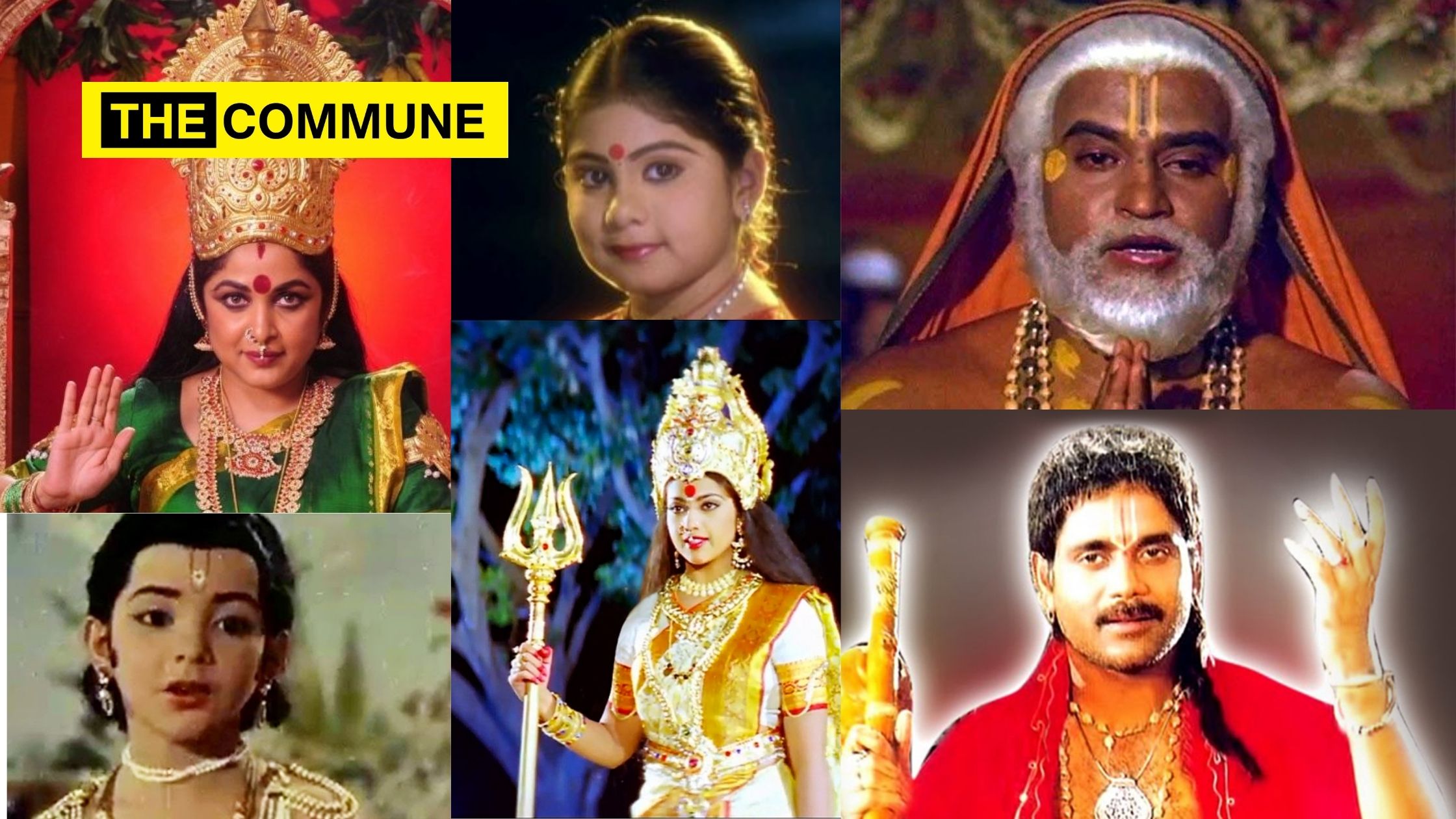
There was a time when Tamil cinema churned out great devotional content that took Hindu mythology and stories to the masses. It was instrumental in putting a face to our favourite gods. Even today, it is hard for any Tamil person to not place Sivaji Ganesan’s face for Lord Sivan. Gone are those days when we had movies like Thiruvilayadal, Saraswathi Sabadham, Kandhan Karunai, Thiruvarutchelvar, etc.
With Mookuthi Amman receicing lukewarm response from the audience, we revisit how Amman movies (or devotional movies as a whole) created a niche for themselves and how they were celebrated back in those days. We also take a look at a few of the best and notable movies in this category/genre.
We do not know how an Amman movie would be received by today’s generation, but we doubt they would never watch them with the same bhaya bhakthi (fear) with which we had watched them in our childhood. It instilled an unexplained fear in us every time Amman (1995) movie was aired on television and how insanely terrorizing was the word Janda by an even more terrorizing anti-God villain. It probably is still scary for a few even now.
We have always wondered and been amazed by the creativity of these Amman movies and how they structure them with some fun moments along with the usual Amman moments. One such movie was the Annai Kaalikambal (2003) where we had the ever stylish Baasha (the elephant) who was a theevira Rajini fan. There is a cute scene involving Baasha trying out the Rajini cigarette action with a cooking log (creatively funny). Also, this was that movie that made a fashion out of an elephant wearing a shirt and a pant, and coolers, and there was even a whole song dedicated to Baasha.
There is this one other movie that was even more creatively cuter, Little John (2001). The movie had a foreign actor (Bentley Mitchum) playing the protagonist, helped by Swamiji (played by Anupam Kher). What surprised us all was that the concept of the little John being the only person to climb down the snake’s pit to fetch the nose ring of the Goddess and put it back in its place so that she would regain her power back just before the peak solar eclipse.
We all talk about transformation sequences these days in movies, but how feared we were during the Amman transformation sequences, which had some terrific CGI works. The best one was the Amman movie climax sequence where Soundarya’s blood splashes on the pottu of the Goddess, and that leads it to transform the idol into the Goddess herself. And, who could ever forget that raja thandavam of Ramya Krishnan as the Goddess, an insanely terrific performance that was.
This may all seem to be very weird and funny premises and setups today with movies moving towards “Hollywood” style, but remember, there was a point in our lives where we believed that actresses Ramya Krishnan, Roja and Meena were the real Goddesses, and how Rami Reddy – the Janda guy – was indeed a master of Black Magic. And, we also truly believed that Solar and Lunar eclipses capsulate the power of Amman and how the anti-God people would exploit such times to release their worst demons to wreck havoc. In a funnier sense, these movies created a sense of fear during Eclipses that even our parents and grandparents were not able to create in us.
If we look beyond the Amman movies, there were a lot of devotional movies as well that were heavily received by the audience those days. To name a few, we had the most famous movie Bhaktha Prahaladha (1967). This was probably the most successful movie ever made, and it is a favourite for a lot of people even now, with memorable performances of Prahaladha and Lord Narasimha characters.
There is Sri Raghavendrar (1995), which happened to be the 100th film of Rajinikanth, was celebrated widely for the calmness displayed by the actor for his character, and for the tense moments of Appanacharya (played brilliantly by Delhi Ganesh) rushing to catch a glimpse of his Guru before the mahasamadhi.
And then there is another very famous Nagarjuna movie, Annamayya (1995). It was said that out of utter devotion, people did not even wear footwear to theatres to watch the movie. Such was the effect the movie had on people, and it was claimed to be like a temple inside the movie theatres.
On the financial front, these films were a huge success during its times. It created a huge market and there were even seasons marked for release (say Aadi, Navaratri, etc). People received them with both hands together, worshipping the Gods on screen. If my memory serves right, for the Amman movie, originally made as Ammoru in Telugu, people prayed and some even showed harathi to the Goddess inside the theatre during that final transformation sequence.
We sometimes wonder how such movies would be received in these modern times, not a re-release, but a fresh movie altogether. It is hard to imagine, but it is indeed possible to present such movies to the current set of “impatient” audience. With a different format of storytelling and latest filmmaking techniques, we could actually give such movies a chance of revamping themselves. Film makers can sketch Amman, Sivan or Murugan as modern day superheroes out to save the world from today’s problems of climate change, biowars, nuclear war, etc.
Though Mookuthi Amman resorts to unwarranted virtue signalling, let us hope that it sets of a series of mythological/devotional movies so that the present generation too can experience the bhaya bhakthi moments with a dash of modern ideas and concepts.




